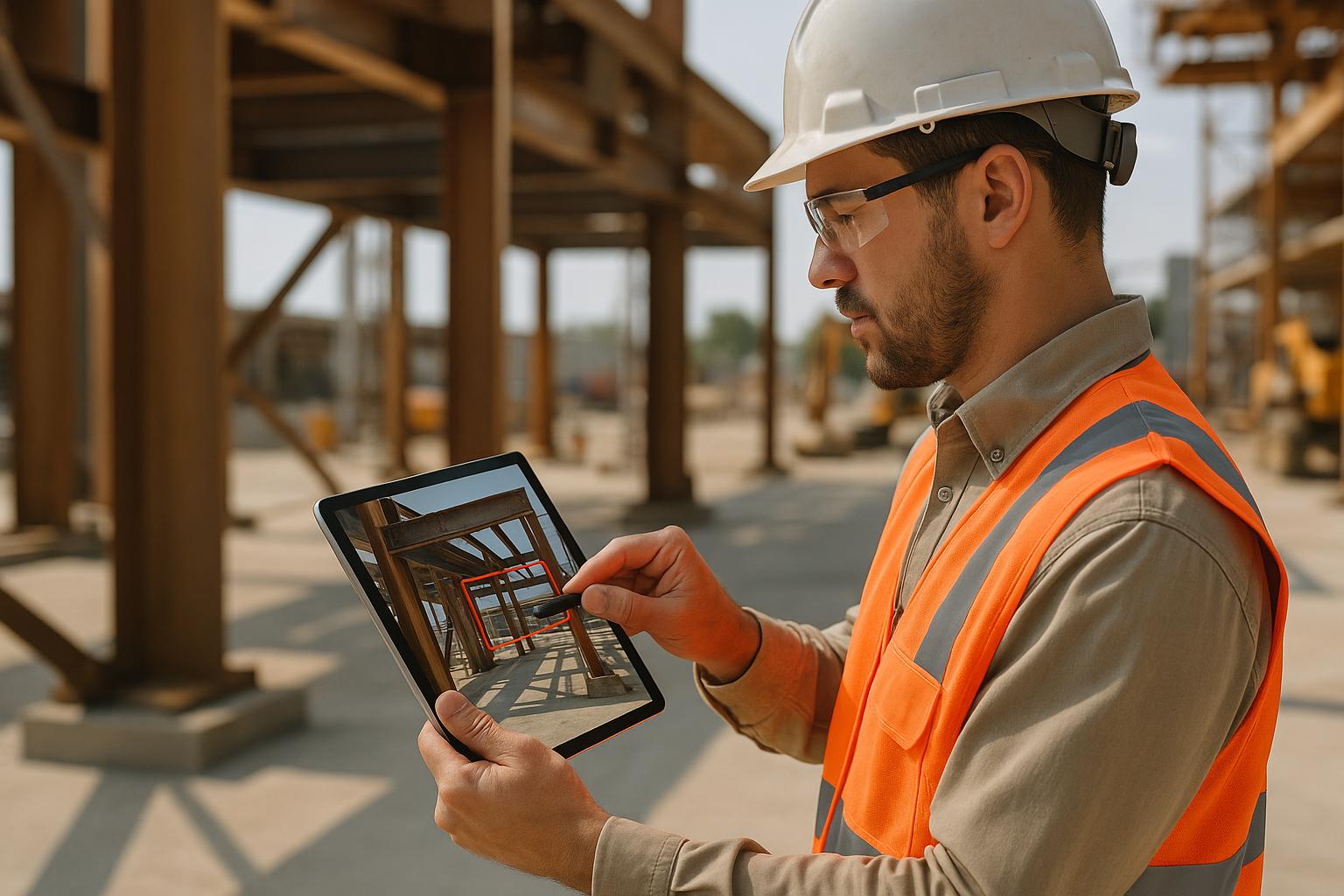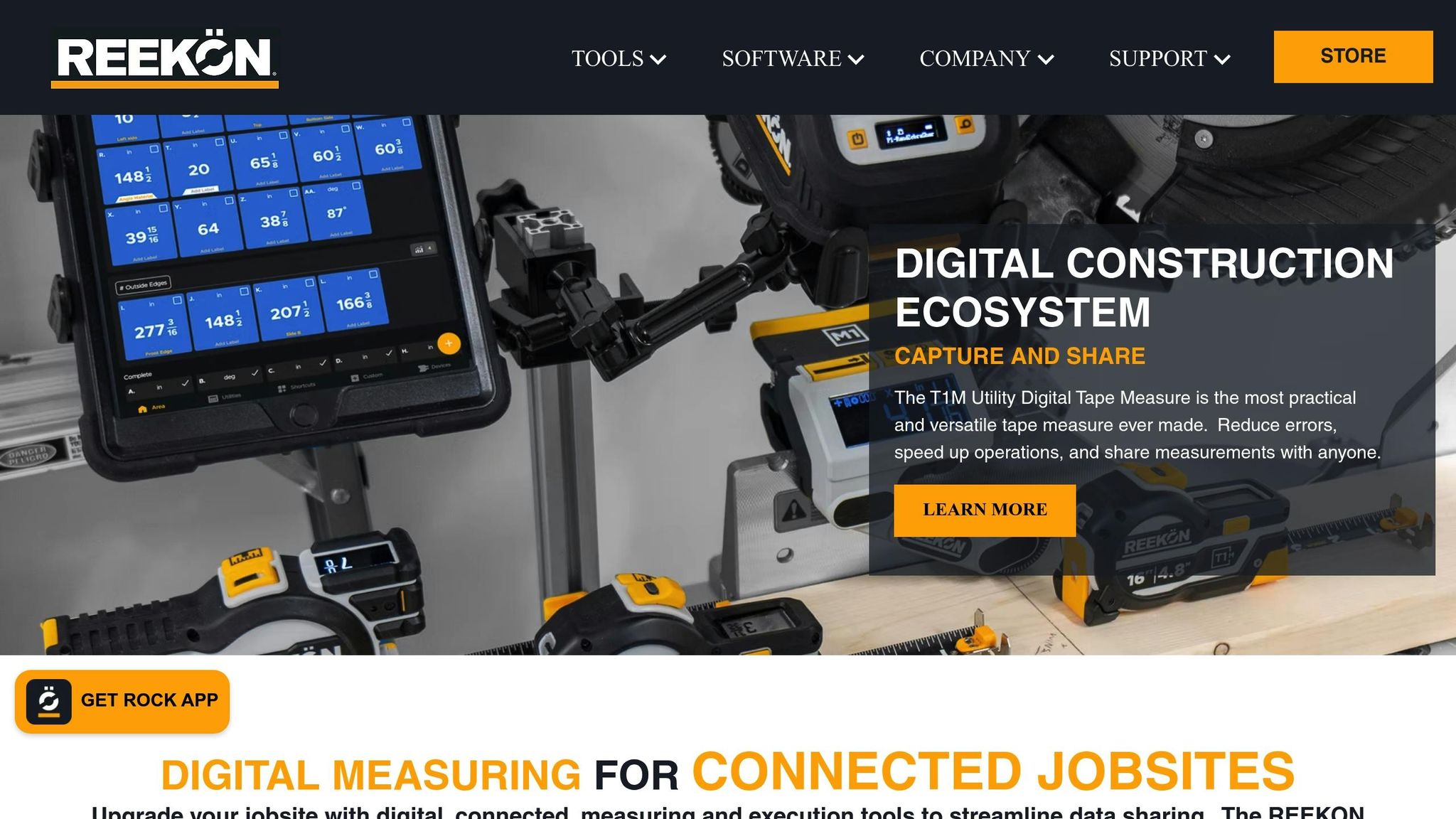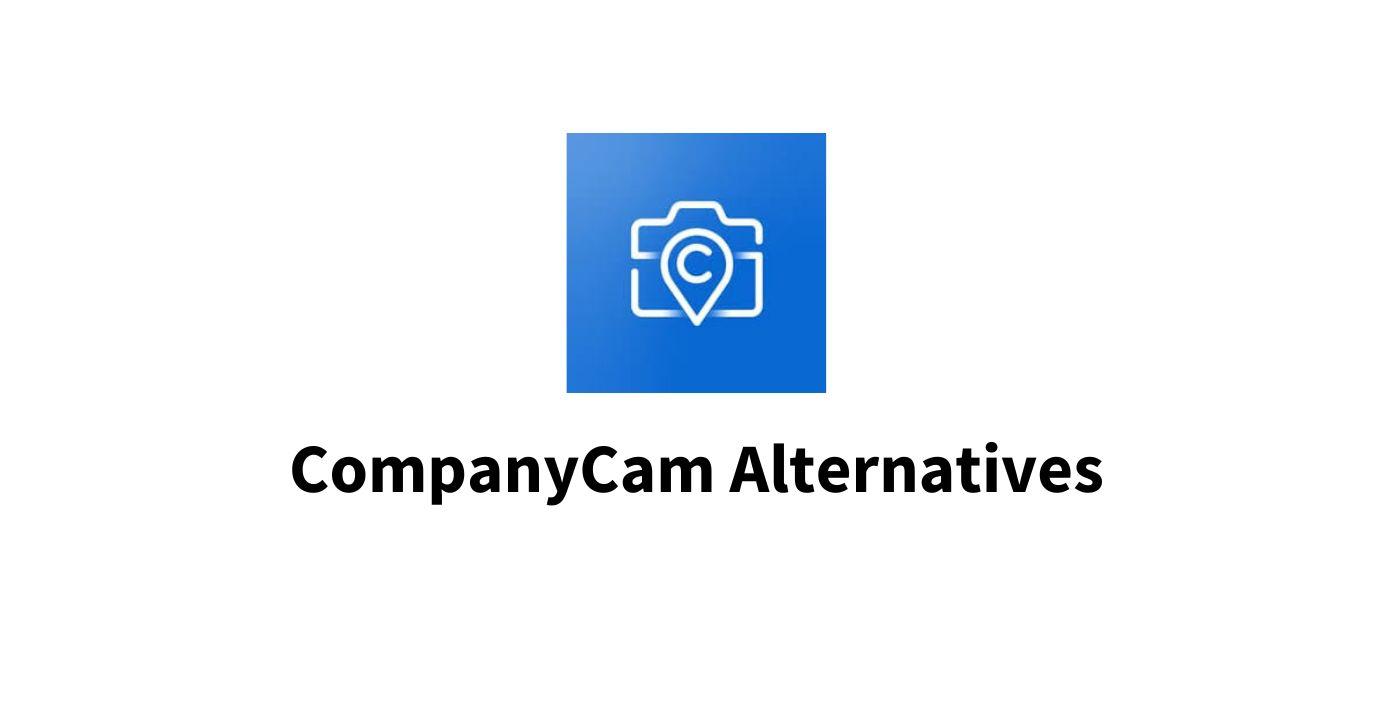Best Practices for Annotating Jobsite Photos

Annotated jobsite photos aren't just pictures - they're tools for clear communication, legal records, and efficient project management. Adding notes, marks, and metadata transforms plain images into actionable resources that reduce confusion, prevent errors, and save time.
Key Benefits:
- Improved Communication: Notes and markups clarify tasks, highlight issues, and reduce back-and-forth.
- Legal Protection: Time-stamped, geo-tagged photos provide solid evidence for disputes or audits.
- Organized Documentation: Structured photo systems make it easy to find and use records.
Common Problems Without Annotation:
- Miscommunication leads to delays and mistakes.
- Photos lose value as evidence without proper notes.
- Disorganized archives waste time during critical moments.
Solutions:
- Standardize Practices: Use consistent annotation methods and metadata.
- Use Wide and Close-Up Shots: Show context and details for complete documentation.
- Organize Photos: Create clear folder systems and add searchable tags.
- Leverage Tools Like CrewCam: Automate metadata, annotate easily, and keep everything accessible in the cloud.
Annotated photos ensure clarity, accountability, and smoother project workflows. Let’s explore how to do it right.
ROCK Jobsite App Overview - Construction Calculator - REEKON Tools

Core Components of Effective Photo Annotation
Effective photo annotation turns everyday jobsite images into essential tools for documentation. Success lies in knowing what details to capture, how to present them visually, and which types of photos will best serve your team.
What Information to Include
Annotated jobsite photos are only as valuable as the metadata they contain. Key details like date and time stamps provide a clear timeline of events, while GPS location data pinpoints the exact spot where the photo was taken. This information becomes crucial in resolving disputes or referencing specific areas months down the line.
Adding descriptive notes about the task, trade, and crew responsible helps connect the photo to the work being documented. For quality control, annotations should include references to relevant plan numbers or specifications being followed. When capturing issues or defects, it's helpful to show measurements using visible tools in the frame to document scale and dimensions. Linking these images to specific tasks further enhances their utility.
The photographer’s identification is also important, as it allows for verification of the documentation later if needed. This thorough metadata approach ensures that photos serve as reliable evidence for tracking progress, resolving disputes, and even providing legal protection.
Once this foundational data is captured, enhancing the image with visual markups creates even greater clarity.
Visual Markups for Clarity
Marking up images directly can spotlight areas of concern or interest. Arrows can indicate the exact location of an issue or highlight completed work that requires attention. Text boxes provide additional space for detailed explanations or instructions, giving context to what’s shown in the image.
Using highlights or circles can draw attention to specific details like welds, joints, or connections, especially when follow-up work is required. This visual method ensures crews have a clear understanding of project progress, helping them make adjustments to stay on track.
Pair these markups with concise captions to provide added context. For quality control, this combination is especially effective in identifying pass/fail items and communicating necessary corrective actions without confusion.
To avoid misinterpretation, maintain consistency in markup styles. Standardizing symbols, colors, and text formatting creates a shared visual language, making it easier for team members to understand annotations and respond quickly.
By combining metadata and visual markups, project records become more robust and ready for legal or managerial review. The next step is to ensure that the types of photos taken provide the right context.
Wide-Angle and Close-Up Shots
The most effective photo documentation uses a two-shot approach: wide-angle context shots paired with detailed close-ups. Start with wide shots to establish context, then move closer for detailed images. This method helps tie the details to the bigger picture, making the documentation easier to understand.
Wide shots should capture overall site conditions, progress from fixed vantage points, and the project’s location within its broader context. These images should include annotations with general information, such as the date, the milestone being achieved, and the area of the project being shown.
Close-up shots focus on critical details like welds, joints, fasteners, and specific building systems before they’re enclosed. These photos require precise annotations, such as measurements, material specifications, installation techniques, and references to relevant plans or specifications.
For installations that will be concealed, take photos at multiple stages - before, during, and after - with clear annotations for each stage. Multiple angles are also important to avoid shadows or obscured details, and each angle should include notes explaining what new information it provides.
This detailed visual strategy ensures that the work is thoroughly documented, giving future teams the context they need to understand both the overall project and the finer details that might otherwise go unnoticed.
How to Organize and Manage Annotated Jobsite Photos
Taking annotated photos with detailed metadata and markups is an essential first step, but the real challenge lies in keeping them organized and accessible. Without a proper system, even the most detailed photos can lose their value. A well-thought-out organization strategy transforms these records into actionable tools.
Building a Systematic Organization Framework
The backbone of effective photo management is a logical and hierarchical folder structure. This means arranging your photos by project, date, and milestone in a way that aligns with your workflow. For instance, you might create a folder path like: "Project Name/2025-10-22/Foundation", with file names such as "2025-10-22_FoundationPour_NorthWall.jpg".
Using consistent naming conventions is key to avoiding confusion. By including details like the date, type of work, and location in the file name, you make photos easy to locate without even opening them. This is especially helpful on large projects where hundreds - or even thousands - of photos may be taken.
On top of folder organization, metadata tagging takes your system to the next level. Adding tags for details like date, time, location, trade, and the responsible person makes photos searchable and verifiable. For example, GPS coordinates and timestamps confirm where and when work occurred, while author tags clarify accountability. Without complete metadata, documentation can lose credibility and create headaches during audits or disputes.
Once your local system is in place, consider tools that enhance collaboration and accessibility.
Using Cloud and Team Collaboration Tools
After organizing files locally, uploading them to the cloud ensures they’re accessible to the entire team. Cloud storage centralizes your photos, enabling real-time access and collaboration. This eliminates the problem of photos being scattered across multiple devices. Plus, when team members move on from a project, their documentation remains available to the rest of the crew.
To protect sensitive information while still promoting teamwork, configure access permissions. Cloud platforms allow team members to upload photos instantly and add comments directly, fostering better understanding of jobsite conditions.
For example, CrewCam offers secure photo storage with automatic date and location stamps, along with real-time uploads and in-app commenting. Their Live Project Feed keeps everyone informed of updates as they happen, and unlimited cloud storage ensures you’ll never run out of space. With desktop login options, project managers can review and manage photos from any workstation.
Linking Photos to Tasks and Checklists
Once your photos are organized and accessible, linking them to specific tasks or checklists ensures they’re not just stored but actively used. Connecting annotated photos to tasks or milestones integrates them into your project management process. This provides visual proof of task completion, helps with quality control, and simplifies compliance documentation. For example, attaching a photo of a finished electrical panel to an "Electrical Inspection" checklist item offers clear, timestamped evidence of completion.
CrewCam’s Checklists by Project feature highlights this integration by letting users create tasks that require photo documentation. As CrewCam puts it:
"Use checklist tasks (and require photos) to take communication to the next level and make sure no info is left behind."
- CrewCam
Requiring photos for task completion adds a layer of accountability and ensures milestones are clearly documented. Linking images to inspection reports and checklists also strengthens quality control and provides a robust record for compliance. Plus, by integrating photos into project workflows, teams can quickly identify delays or issues. This allows for faster responses, whether that means reallocating resources or adjusting schedules to keep the project on track.
sbb-itb-5f4c686
Using CrewCam for Photo Annotation and Management

CrewCam takes photo annotation and documentation to the next level by combining essential tools into a single, easy-to-use platform. While earlier strategies for organizing photos provide a strong starting point, CrewCam ensures those best practices are carried out efficiently and effectively. Designed specifically for construction and service professionals, this platform integrates photo documentation with advanced annotation capabilities, helping teams maintain clarity and accountability on every project.
On-Photo Annotations and Notes
With CrewCam, photos become more than just static images - they turn into dynamic tools for communication. Users can add drawings, text, and comments directly onto photos, making it easier to share context and highlight key details.
The drawing tools let you circle problem areas, sketch solutions, or point out specific details right on the image. This visual approach eliminates the confusion that often comes with written descriptions or verbal explanations. For example, a photo annotated with arrows and a note like "requires additional support here" leaves no room for misinterpretation.
Comments are another powerful feature, ensuring that feedback is shared instantly and stays tied to the relevant photo. Unlike emails or text messages that can get buried, these comments remain attached to the image, creating a permanent record of discussions and decisions. Plus, these annotated photos integrate seamlessly into CrewCam's workflow, linking on-the-ground details to broader project tasks.
GPS and Time-Stamped Photos
One standout feature of CrewCam is its automatic date, time, and location stamping for every photo and video. This isn't just a convenience - it's a critical tool for creating documentation that holds up in legal or professional disputes.
These stamps provide undeniable proof of when and where work was completed, helping users avoid disputes over timing, location, or responsibility. As CrewCam puts it:
"All photos in CrewCam are time and location stamped so you can save your butt and avoid getting the finger pointed at you."
This feature becomes especially valuable in resolving conflicts or during legal proceedings. GPS coordinates confirm the exact location of the work, while timestamps establish a clear sequence of events. Together, these details act as a safeguard against backcharges, overages, or lawsuits, offering concrete proof of jobsite progress and conditions.
With every photo properly documented, project managers can focus on their work rather than worrying about liability. If questions arise weeks or months later, the metadata provides clear answers, ensuring no detail is overlooked. These features also enhance collaboration by keeping all team members informed and on the same page.
Team Collaboration and Cloud Integration
CrewCam tackles the common challenge of scattered documentation by centralizing everything in one place. The Live Project Feed ensures that any new photos or annotations are instantly visible to the entire team, keeping everyone updated in real time.
The platform also allows for controlled sharing through its guest access feature. This means external stakeholders - like clients, inspectors, or subcontractors - can view specific project details without needing full system access. It’s a perfect balance of security and transparency.
Even in areas with poor connectivity, CrewCam’s offline mode has you covered. Photos and updates sync automatically once an internet connection is restored. Research shows that cloud-based photo documentation can cut administrative time spent searching for images by up to 40%. CrewCam’s search tools and organizational features make finding specific photos quick and painless.
Additionally, the sharable photo gallery simplifies client communication. Users can select and share only the most relevant images, ensuring stakeholders get the information they need without being overwhelmed by unnecessary details. This feature streamlines updates and keeps everyone informed without adding extra noise to the process.
Solving Common Photo Annotation Problems
Photo annotation challenges can often be resolved with practical solutions that ensure documentation stays consistent, thorough, and easy to access.
Standardizing Annotation Practices
When crews use inconsistent annotation methods, documentation can become fragmented and miss important details. For instance, one team member might take wide shots with minimal notes, while another focuses on close-ups with detailed descriptions. This lack of uniformity can lead to critical gaps.
In fact, over 60% of construction disputes stem from documentation issues, with incomplete or missing photo metadata being a key culprit. The solution lies in setting clear, written protocols that everyone adheres to.
Effective teams establish specific guidelines for photo annotation. This includes rules for when to take wide-angle versus close-up shots, how to use visual markups to highlight key details, and consistent methods for describing progress or problems. For example, a plumbing subcontractor documented all in-wall plumbing installations with annotated photos showing pipe materials, connections, and pressure tests before drywall installation. Months later, when a leak was suspected, these standardized photos helped the team identify the exact location and details of the installation. This avoided unnecessary demolition and resolved the issue quickly.
Training is essential to make this work. Hands-on workshops using real-world scenarios and quick-reference guides can help crew members apply these standards in the field. Regular audits ensure that everyone stays aligned with the protocols. Once these practices are in place, they also set the stage for automated metadata capture.
Making Sure Metadata is Complete
Without complete metadata, photos lose their value during critical reviews. Manually entering dates, times, and locations often leads to errors, which can cause significant issues during disputes or compliance checks when precise documentation is crucial.
The best way to avoid these problems is to use tools that automate metadata capture. For instance, CrewCam automatically attaches GPS coordinates, timestamps, and user information to every photo and video. This removes the guesswork and ensures that all essential metadata is accurate and included.
Tyler Stewart, Technology Solutions and Training Manager at Sellen Production, shared how adopting photo documentation software with annotation and metadata features in 2024 brought major improvements. The company experienced a 30% reduction in time spent on legal documentation, while field workers could "easily access data, keeping our field workers on site instead of in the legal office".
Additionally, OSHA regulations emphasize careful review of jobsite photos to avoid unintentionally documenting safety violations that could be used against the company. Automated metadata capture supports compliance by maintaining reliable and accurate records that can hold up under scrutiny.
Improving Search and Sharing Capabilities
Trying to find specific photos weeks or months later can feel like an impossible task without an organized system. Disorganized photo libraries and limited search options waste valuable time during crucial moments.
A systematic approach to photo organization is essential from the start. This includes using descriptive tags, creating clear project hierarchies, and leveraging platforms with strong search capabilities. Cloud-based photo documentation tools can speed up image retrieval by as much as 40%.
CrewCam simplifies this process with advanced search and organization features. Users can quickly locate specific images by filtering by date, location, project phase, or custom tags. Its sharable photo gallery feature allows users to distribute only the most relevant images to stakeholders, ensuring that everyone receives the necessary information without being overwhelmed.
To address security concerns, CrewCam’s guest access feature lets external stakeholders - like clients or inspectors - view specific project details without needing full system access. This strikes a balance between transparency and security, meeting the demands of modern projects.
Conclusion: Improve Project Documentation with Best Practices
Jobsite photo annotation, when done right, transforms basic images into powerful, actionable records. The secret? Consistency. Teams should aim to capture both wide-angle context shots and detailed close-ups, use standardized visual notes, and ensure every image includes complete metadata.
But this isn’t just about staying organized. By sticking to a routine - like scheduling regular photo updates and using fixed vantage points - teams create a dependable visual timeline. This doesn’t just help with tracking progress; it’s a game-changer for onboarding new members and keeping everyone on the same page. And when you pair these practices with the right technology, the benefits multiply.
Enter tools like CrewCam, which take the hassle out of manual processes. With features like automated GPS tagging, time-stamping, and built-in annotations, CrewCam ensures every photo is accurate and provides the context you need. Its project-based organization and advanced search functions make it easy to find critical images, whether you’re addressing a compliance concern or settling a dispute months later.
"All photos in CrewCam are time and location stamped so you can save your butt and avoid getting the finger pointed at you." – CrewCam
The results are hard to ignore. Companies that adopt robust photo documentation systems report better efficiency and reduced legal risks. By centralizing jobsite photos on a platform with real-time collaboration, teams can remotely monitor progress while keeping detailed, accountable records.
It’s also worth noting that OSHA regulations demand careful management of jobsite photos to avoid unintentionally documenting safety violations. This makes proper annotation and organization not just a smart move, but a compliance requirement. Combining standardized annotation practices with automated metadata and cloud-based storage creates a system that safeguards your business while keeping operations smooth.
FAQs
How do annotated jobsite photos help improve team communication and avoid delays?
Annotated jobsite photos are a powerful way to communicate visually. By adding drawings, notes, and comments directly to images, they provide a clear and detailed way to convey project information. This ensures everyone on the team is on the same page, minimizing the chances of miscommunication.
With precise visual context, these annotated images make it simpler to address problems quickly, keep the team aligned, and prevent delays that might arise from unclear instructions or missed details.
What metadata should be included in jobsite photos to ensure they are reliable for legal and project documentation?
To make jobsite photos dependable for legal and project documentation, it's crucial to include GPS location data, time and date stamps, and clear annotations. These details add essential context, like pinpointing where and when the photo was taken, which helps create a reliable record of events.
Using tools that enable on-photo annotations and notes can further enhance clarity and communication. This ensures that critical information is highlighted and not missed. Well-documented metadata not only reduces potential liability but also simplifies project management.
How can CrewCam improve the way jobsite photos are organized and annotated for better project management?
CrewCam takes the hassle out of managing jobsite photos by keeping all your images and videos in one secure, organized place. Every photo is automatically stamped with the date, time, and location, giving you accurate records for your projects without any extra effort.
The platform also boosts collaboration with tools like on-photo annotations, notes, and comments, making it easy for teams to point out and discuss key details directly on the images. Plus, features like checklists and a sharable photo gallery simplify project management, helping you keep everyone - whether team members or clients - on the same page. The result? A smoother workflow and fewer chances for errors or miscommunication.
Related Blog Posts
See CrewCam in action


%20(3).svg)






